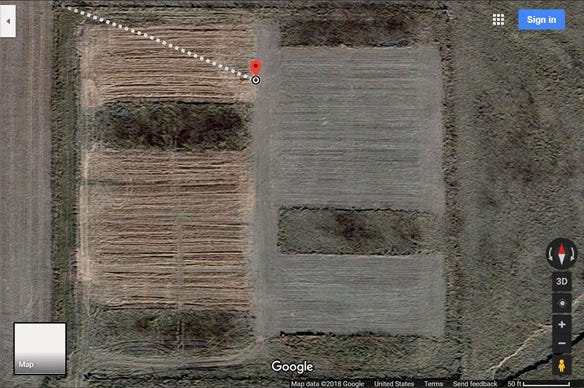
In the state of Nebraska, there are a number of places where the native prairie has never seen a plow — for example, the majority of the Sandhills and parts of the Panhandle, where rangelands are much more prevalent than they are to the east.
A small slice of mixed-grass prairie at the University of Nebraska-Lincoln’s High Plains Ag Lab near Sidney has never been plowed, and for Nebraska Extension, it’s the perfect place to compare native, untouched prairie to various tillage treatments.
In 1970, Nebraska Extension dryland cropping systems specialist Charlie Fenster and Gary Peterson, soils specialist at Colorado State University, fenced off the area and kicked off a long-term study to compare native grass to wheat-fallow systems under tillage and no-till.
“The sod treatment, the plots that were never tilled, still remain today. The sod treatment has only been burned on occasion; it’s never been hayed or grazed. It’s only been burned once in a while to get some accumulation and promote grass growth,” explains Cody Creech, Nebraska Extension dryland cropping systems specialist at the Panhandle Research and Extension Center (PREC).
3 tillage treatments
When the study was first established, there were three tillage treatments used — a moldboard plow treatment, where the soil would be plowed 10 to 12 inches deep; a reduced or minimum tillage system, where researchers relied on sweeps or a disk to work only the top of the soil and maintain residue on the soil surface; and a no-till plot that was never tilled. All of these were compared to the native sod plots. Each plot is about 160 feet long and 45 feet wide.
“In the nearly 50 years they’ve been there, they’ve never been fertilized. The native fertility is still pretty good, and we still get decent wheat yields out there,” adds Creech. “It’s a wheat-fallow system, where half the study is planted in wheat and half is fallow, and it rotates back and forth every year.”
What wasn’t surprising, as shown by more recent reviews of the project, was the increase in organic carbon, and reduction in maximum bulk density of the soil in no-till systems compared to tillage treatments.
“The thing that has probably surprised us the most is even though we haven’t applied any type of fertilizer to those plots in those 40 years, it still appears to be maintaining a good level of fertility in terms of nitrogen and phosphorus,” Creech says. “It’s a little different across treatments; and even with plow treatments, we’re still seeing good fertility. We kind of expected the tillage treatments to affect soil aggregates, but I don’t think we expected fertility to maintain as long as it has. That’s been a pleasant surprise.”

PLOT LAYOUT: This Google Maps image shows the study’s plot at the High Plains Ag Lab near Sidney, Neb. When the study was first established, there were three tillage treatments used — a moldboard plow treatment, a reduced or minimum tillage system, and a no-till plot that was never tilled. All of these were compared to the native sod plots. In 2010, the plowed treatments were changed. Now, one-half of the plowed plots will be no-tilled, while the other half will be tilled every six years.

And that’s likely due to ground being kept in native sod for so long. “My guess would be, because it’s native sod, those carbon levels had been built up over time. Doing just a wheat-fallow where it isn’t very intense, we’re not removing a lot from the site. It’s able to maintain,” Creech adds. “We never removed the residue. We don’t go in and bale the straw. There’s likely been a lot of nutrient cycling going on as carbon has started to break down and become available over the years.”
Change made to study
In 2010, after 40 years of the study, Drew Lyon, Creech’s predecessor at the PREC, changed the study, splitting the plowed treatments in half and changing the other half of the plowed plots to no-till.
“They want to see if they stop tilling, will the soil start to revert closer to that native sod? So, half the plot is no-tilled. On the other half of the plot, now they’re doing intermittent tillage, where they till every six years,” says Creech. “On those plowed plots, one-half might have been plowed in 2010, and then again in 2016, to see how reducing the frequency of the tillage might compare to going to completely no-till — and how those two different treatments compare to the native sod. The assumption is the soil characteristics will start to move closer to what that native sod is.”
Creech notes that the next set of samples taken when the next tillage treatments are implemented will highlight some of these changes. Over the next couple years, the research will be reviewed to highlight new findings after the change in 2010.
“That’s one thing that makes this experiment valuable — it has the native sod plot in the study to compare to. There are other long-term tillage studies, but none have replicated plots of native sod in the study,” says Creech. “That makes what we’re doing here pretty unique.”
About the Author(s)
You May Also Like






